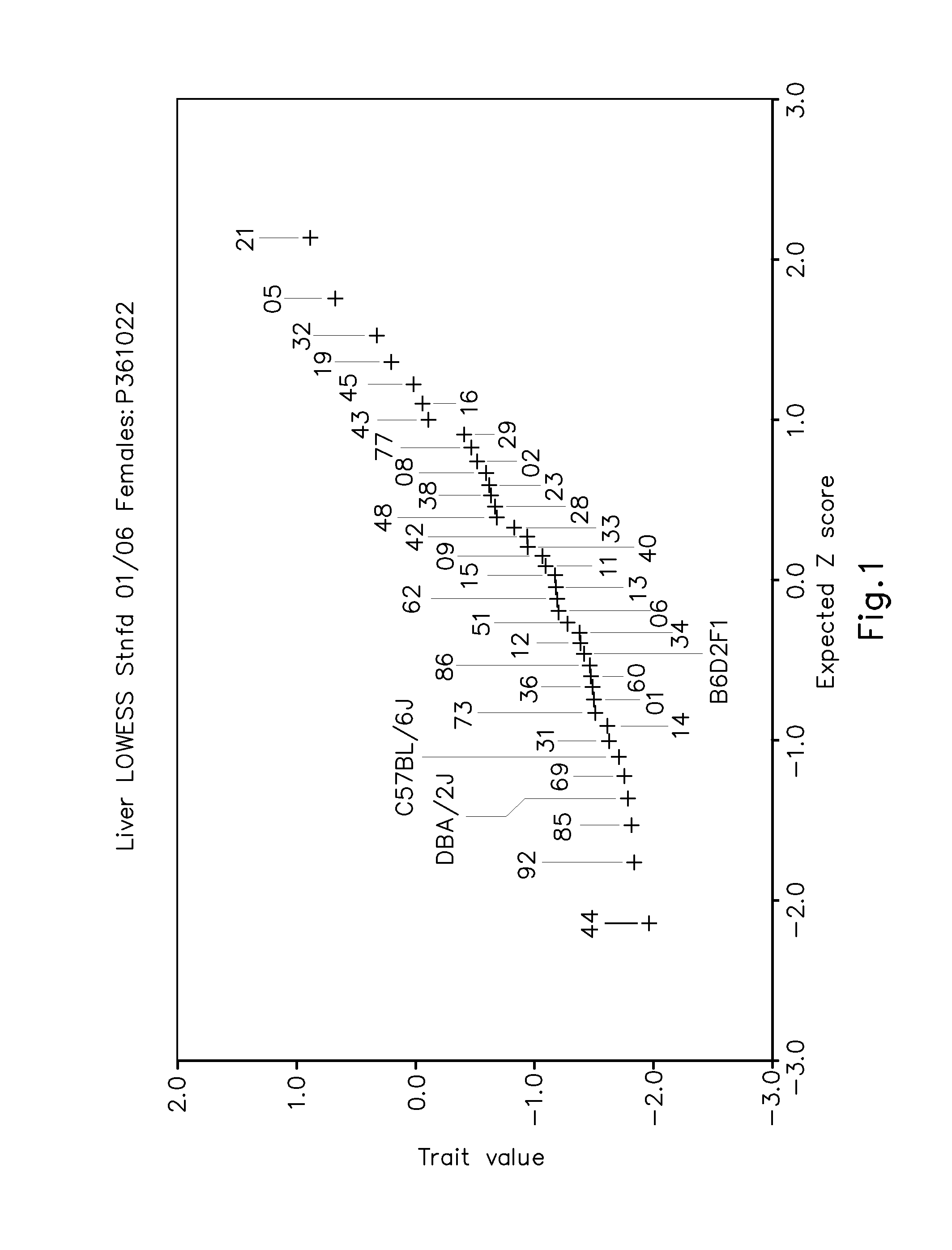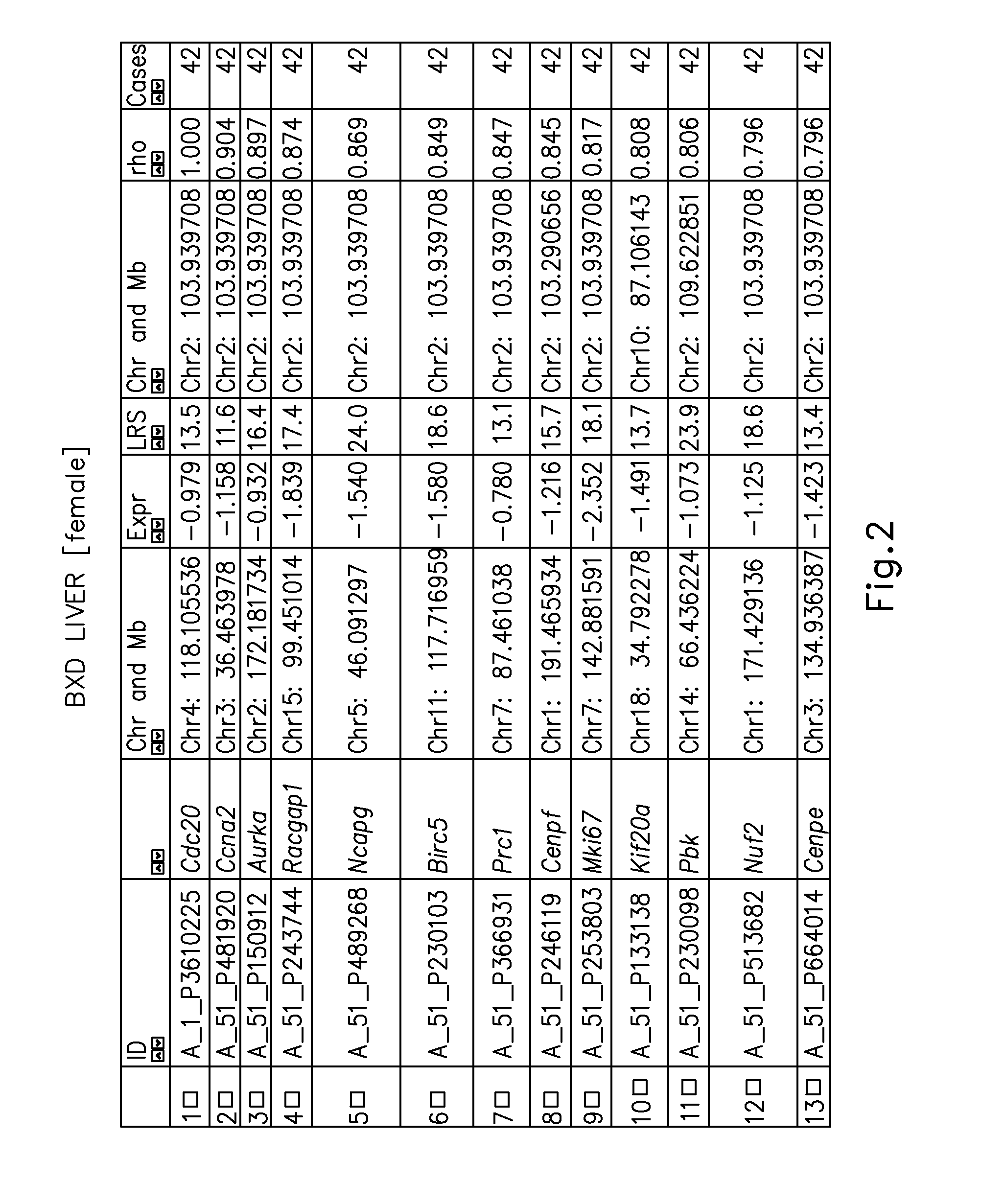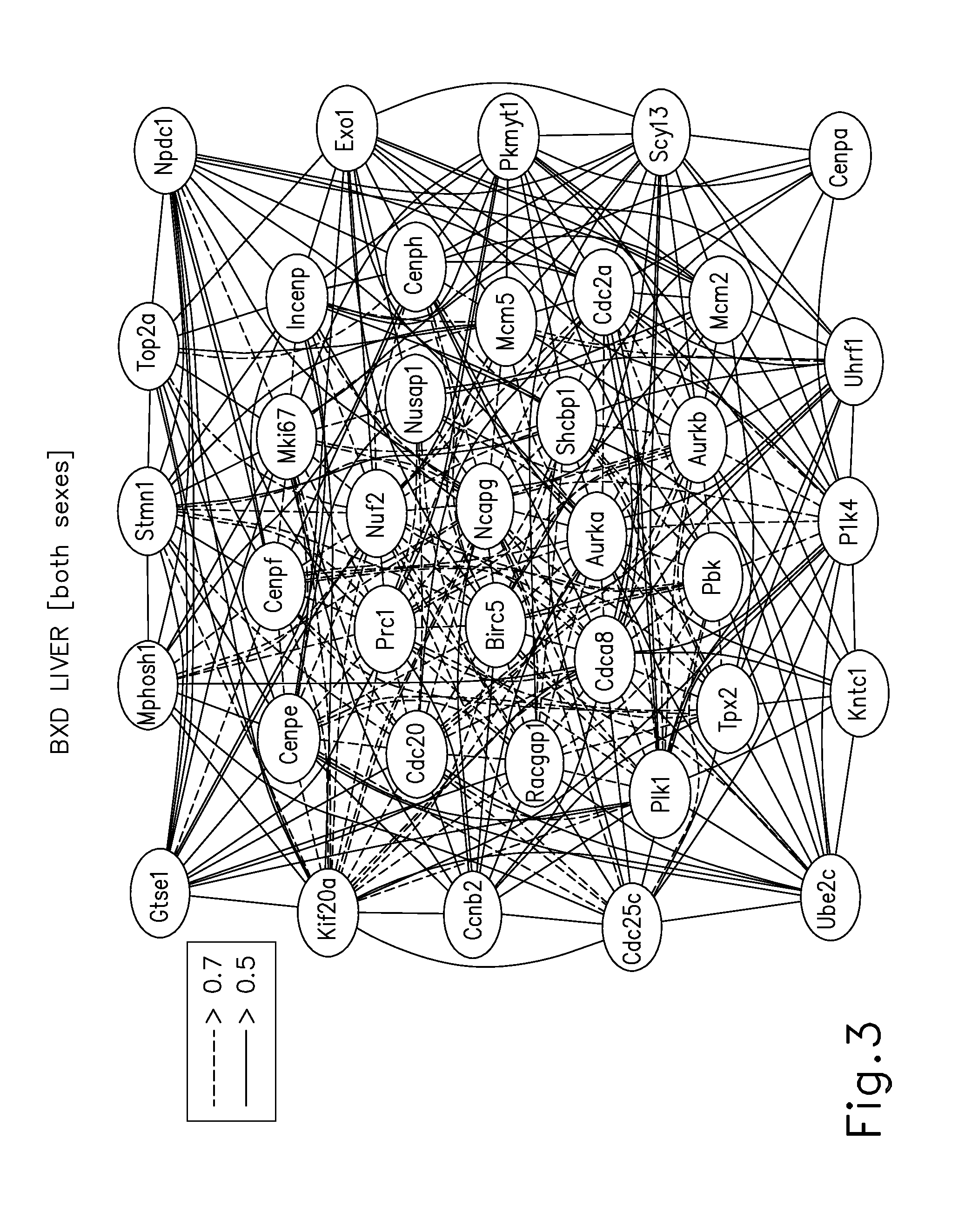Systems genetics network regulators as drug targets
a genetic network and regulator technology, applied in the field of system genetic network regulators as drug targets, can solve the problems of difficult to identify all regions difficult to define which candidate qtg(s) might serve a modulatory role, and difficult to achieve the goal of identifying all such regions that are associated with a specific complex phenotype, etc., to prevent or reduce the incidence of liver cancer in the patient, and prevent or reduce the incidence of liver cancer
- Summary
- Abstract
- Description
- Claims
- Application Information
AI Technical Summary
Benefits of technology
Problems solved by technology
Method used
Image
Examples
Embodiment Construction
[0100]The meanings of the terms used in the specification are as follows:
[0101]The term “aromatase” refers to an enzyme of the cytochrome P450 superfamily (CYP19A1), whose function is to aromatize androgens to produce estrogens. Aromatase is predominantly located in the endoplasmic reticulum of the cell and tissue specific promoters that are in turn controlled by hormones, cytokines, and other factors regulate its activity. The principal transformations catalyzed by aromatase are the conversion of androstenedione to estrone and testosterone to estradiol. Aromatase can be found in many tissues including liver, gonads, brain, adipose tissue, placenta, blood vessels, skin, bone and endometrium as well as in tissue of endometriosis, uterine fibroids, and various cancers.
[0102]“Aromatase inhibitors” inhibit aromatase (estrogen synthase), a membrane-bound enzyme complex that catalyzes the conversion of androgens to estrogens. Aromatase inhibitors include third-generation aromatase inhibit...
PUM
| Property | Measurement | Unit |
|---|---|---|
| density | aaaaa | aaaaa |
| size | aaaaa | aaaaa |
| chemical structure | aaaaa | aaaaa |
Abstract
Description
Claims
Application Information
 Login to View More
Login to View More - R&D
- Intellectual Property
- Life Sciences
- Materials
- Tech Scout
- Unparalleled Data Quality
- Higher Quality Content
- 60% Fewer Hallucinations
Browse by: Latest US Patents, China's latest patents, Technical Efficacy Thesaurus, Application Domain, Technology Topic, Popular Technical Reports.
© 2025 PatSnap. All rights reserved.Legal|Privacy policy|Modern Slavery Act Transparency Statement|Sitemap|About US| Contact US: help@patsnap.com



